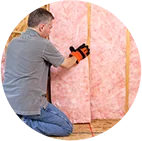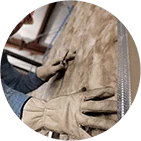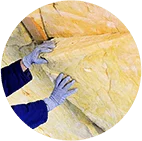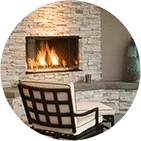- 600 S. Vincent Ave. Azusa, CA 91702
Frequently Asked Questions
Whether you’re getting ready to re-insulate your home or install a new fireplace, asking the right questions can help. Read these FAQs and if you can’t find the answer to your question, feel free to contact us!
Insulation
What are the different types of insulation?
Southern California & Bay Area Insulation Contractors There are several different types of insulation, and a professional insulation contractor will be able to tell you which type is best for your home and specific situation. Loose-fill (blown-in) is very common, …
How does insulation work?
Insulation makes your home more energy efficient by stopping heat transfer (meaning your home will stay cooler in the summer and warmer in the winter). The insulation material used determines HOW it resists heat flow. Radiant barrier, for example, helps your home reflect (rather than absorb) heat from the sun, while other types of insulation absorb heat – kind of how a blanket traps your body heat and keeps you warm when you're in bed.
Where should I install insulation?
The best place to install insulation is your attic, as it is a huge source of heat loss. However, this certainly isn't the only place you should insulate! In general, it's ideal to insulate:
- Any crawl spaces in your home
- Exterior and interior walls
- Floors
- Ceilings
And, of course, you should contact a local insulation company for an in-home consultation!
How much insulation do I need to install?
Well, that depends on a few different factors, the biggest two being the age of your home and the climate zone you live in. The amount of insulation you need to install will also depend on things like the type of heating and cooling system you have, the areas of your home you need to insulate, etc.
How do I tell if I need to re-insulate my home?
As a general rule of thumb, you most likely need to re-insulate if your home was built in the 1970s or before (though this isn't ALWAYS the case, so be sure to check with a professional insulation company first!). There are some signs you can look out for that may indicate your home has an insufficient amount of insulation.
What does R-value mean?
You may have heard the term "R-value" before in relation to insulation. The R-value of a type of insulation measures how well it stops heat transfer (the higher the R-value, the better!), but it depends on the material, thickness, and density of the insulation.
How Does Insulation Reduce Noise?
Limiting the transmission of sound from one location to another requires a material that encloses the source of the noise and forms a barrier between the source and the adjacent area. This is exactly what insulation does. Fiberglass and cellulose are the best types of insulation for soundproofing purposes.
What are the benefits of insulation?
Although increased energy efficiency and lower energy bills are the biggest benefits installing insulation offers, there are a number of others, including:
- A more comfortable home year round
- Reduced outside noises (and noises from different levels or rooms in your home)
- Improved air conditioner performance
- Reduced carbon footprint
- Protection against air leaks
Retrofit Insulation Service in Southern California
Retrofitting a home or building with insulation is essentially re-insulating. New construction insulation is installed during construction of a home or building. It's usually easier and more cost-effective to insulate a home or building that's being built, but sometimes retrofit insulation is required.
What is the difference between fiberglass and cellulose?
One way to help you save on your energy bills is to install insulation. Two of the most popular types of insulation are cellulose and fiberglass. What is the difference between them and which one is right for your home?
Should I install radiant barrier insulation even if I already have attic insulation?
Yes, you may want to install radiant barrier insulation under your roof, even if you already have insulation in the attic. Here in Southern California and other warm climates, it can be cost-effective to install both a radiant barrier and thermal insulation in your attic.
How much does insulation save?
According to the U.S. Department of Energy, about 45 percent of a typical homeowner’s utility bill comprises heating and cooling costs. You can save up to 50 percent on your energy bills, and re-insulating is a great way to increase the energy efficiency of your home. Specifics about how much energy you can save with insulation depends on factors like the size and construction of your house, the type of HVAC systems you have and more.
What is blanket insulation?
Blanket insulation—a commonly used type of insulation—comes in the form of batts or rolls. It consists of flexible fibers, usually fiberglass. Batts and rolls can also be made from mineral (rock and slag) wool, plastic fibers, and natural fibers, such as cotton and sheep's wool.
How is air sealing related to insulation and energy efficiency?
Sealing your home is just as important as insulating it because air leaks undermine the performance of insulation. Places in your home where you can usually find air leaks include:
- Crawl spaces
- Around windows and doors
- Duct vents
- And more
How is cellulose environmentally friendly?
Cellulose insulation consists of up to 80 percent recycled material (primarily newspaper), and it takes less energy to make than other types of insulation. If the paper put into landfills every year were used to make cellulose insulation, it would save approximately eight million tons of CO2 emissions!
What’s the best soundproofing insulation?
Installing insulation can help reduce outside noises and noises between different rooms and levels inside. The best soundproofing insulation materials are cellulose and fiberglass.
How do I find the right insulation company?
Finding the right insulation company requires research—this includes looking on industry websites like NAIMA and also the Better Business Bureau, Angie’s List, etc. When you find a handful of potential companies, ask them questions such as:
- Are you certified and insured?
- How long have you been in business?
- Do you have any references I can contact?
- How will you ensure my home stays clean and in top condition during the project?
Fireplaces
What are the benefits of a gas fireplace?
Gas fireplaces offer a number of benefits, including energy efficiency, convenience and aesthetics.
Gas vs, Wood-Burning Fireplace: Which Is Right for You?
Both types of fireplaces have their own advantages. There is no better option—it comes down to your personal preferences!
Our Company
How long has OJ Insulation been in business?
OJ Insulation opened for business in 1984 in El Monte, California. Our objective was to develop a reputation among local builders and contractors for thorough professionalism in completing commercial and residential insulation projects. Today, we provide insulation services for new …
What areas do you serve?
We provide services in Southern California, in the San Diego and Los Angeles areas—as well as further north, in the Bay Area. Our offices are located in Azusa, Escondido and Gilroy.
What products do you install?
We insulate attics, walls and crawl spaces with: Fiberglass Cellulose Radiant barrier
Do you offer only insulation services?
In addition to insulation, OJ Insulation offers acoustical ceiling and tile services. We also install fireplaces for new construction projects.
Do you offer free estimates?
Yes, we offer free home and commercial insulation estimates!
If you didn't find the answer to your question, get in touch with one of our experts!











